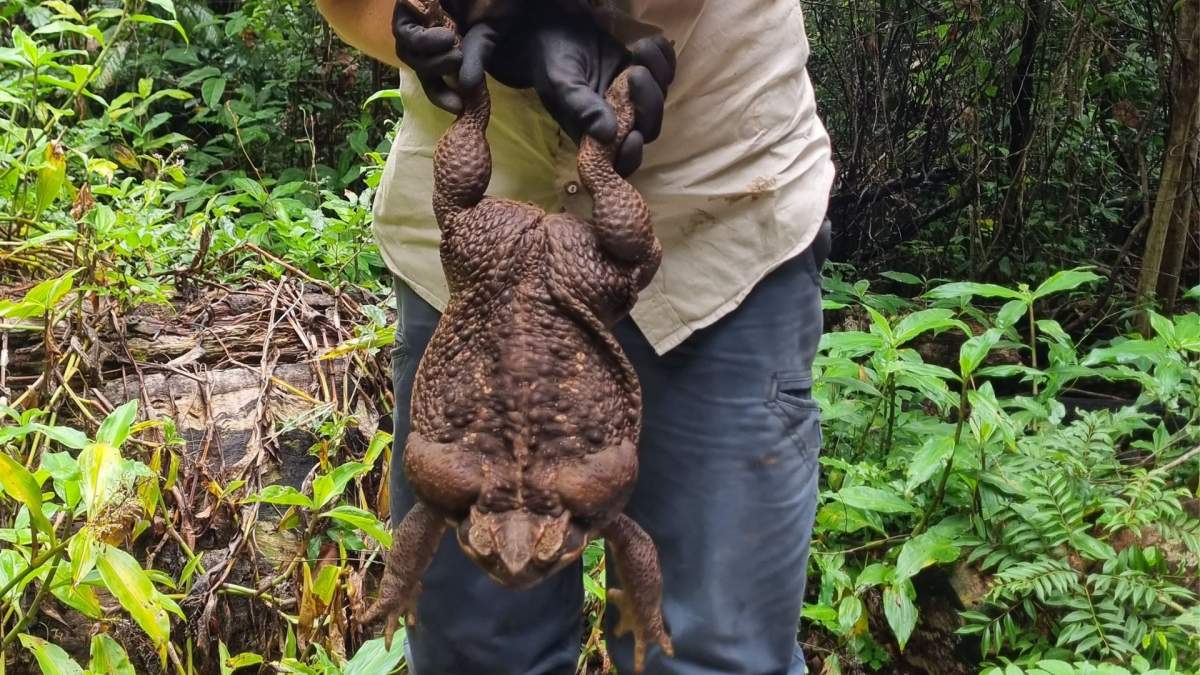First there was Godzilla, now there’s what officials are calling “Toadzilla.”

Park rangers in northern Australia were stunned when they found a massive, nearly six-pound cane toad in Conway National Park last week.
Kylee Gray, a member of the Queensland Parks and Wildlife Rangers who was present for the discovery, said the toad — dubbed Toadzilla by the team — may be the largest toad ever discovered. In an interview with the Australian Broadcasting Corporation, Gray said the monster-sized amphibian “looked like a football with legs.”
Toadzilla was so large that the rangers originally thought the animal was fake.
Once the confusion subsided, the toad was placed in a container and removed from the wild. It was later euthanized, as cane toads are one of the most damaging invasive species in Australia. Their population is estimated to be over 200 million.
Queensland Environment shared two photos of the massive toad, which they said weighed 2.7 kilograms (about 5.9 pounds). Rangers placed a blue pen beside the toad in one image to better demonstrate its gargantuan size.
Before Toadzilla, the largest was believed to be another cane toad from Sweden that weighed 5.13 pounds.

Get breaking National news
Cane toads are not native to Australia. They were introduced to Queensland in 1935 in an attempt to control cane beetle populations.
The amphibians can be fatally poisonous to nearby wildlife and have triggered the local extinction of several of their predators.
“They compete with our native species for food and shelter,” Grey said.
She added that due to Toadzilla’s size, the rangers were “concerned” about what it had been eating. Though Grey couldn’t say for certain, she assumed the toad would have had a diet of rodents, reptiles, snakes and “whatever she could find.”
The rangers believe Toadzilla is a female, which can have as many as 30,000 babies every year.
The rangers could not determine how old Toadzilla was, though the average lifespan of a cane toad is between 10 and 15 years.
Toadzilla will be donated to the Queensland Museum for further examination, as is standard practice.
- Police ‘naturally’ recover poached Fabergé egg swallowed by suspected thief
- Family of Colombian man killed in U.S. boat strike alleges murder, files complaint
- U.S. military kills 4 alleged ‘narco-terrorists’ in another boat strike
- U.S. Supreme Court allows Texas to use redrawn voting map, favouring GOP











Comments